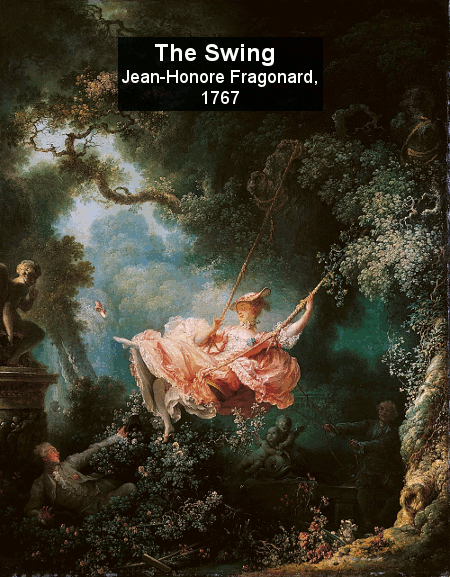 |
| A GIF art lesson (be patient for it to start). |
Yesterday, some friends and relatives were sitting around talking about the olden days before Wi-Fi, at which time I came to realize that I've had an Internet presence now for more than twenty years! I got my first modem for Christmas, 1995. WOW! How time flies when you're having fun. And it has been fun...every minute of it. Very few people noticed it at the time (because so few people even had computers, much less the Internet, but about ten years before I came on line, a group of software developers in Columbus, Ohio, led by Steve Wilhite, came up with a totally new art medium capable of making digital images move.
The 1980s and 90s, tech breakthroughs came
like lightning in a thunderstorm.
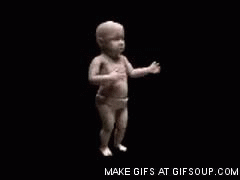 |
| The famous dancing baby. |
They called it the Graphics Interchange Format, better known by its acronym, GIF. Under normal circumstances, such a startling invention would have been hailed as a technological breakthrough just short of color TV and having a greater impact than say...Rice Krispies? But as it was, such digital developments at the time were occurring like lightning in a thunderstorm. The reaction was...hmmm, interesting...did you hear about this new company called AOL that's doing away with hourly Internet access rates? CompuServe's new GIF format was little noticed until along came a dancing baby. Today we'd say the little toddler went "viral," though the term hadn't yet arrived. That was roughly 1990. Today, Wilhite's crude little creature has been replaced with the real thing, yet still using the same basic technology (below).
 |
Get down, little guy!
We need your dancefloor for lunch. |
If what nerdy math geniuses in dimly lit computer labs could do with this new image medium was little short of miraculous, putting GIF soft-ware in the hands of artists was like
giving candy to a baby. (Speaking of babies, do you have any idea how hard it is to write with a drooping diaper dancing directly next to your text?) During the next several years the use of eye-catching little GIF icons spread like butter on a hot sidewalk to early websites like my own (which probably still has a few even after all these years).
 |
| It's called "morphing" and its all the GIF rage right now. |
Of course, even as GIFs grew in size and dazzling complexity, such artwork became tiresome as an attention getting device. They were, by their very nature, repetitious and boring after the first couple minutes (are you bored with the dancing toddler yet?) Worse, once they started, there was no way to
stop them. However, it was about this time that the Internet porn industry latched on to video GIFs where boredom was seldom a problem and repetitious movements were
assets. Since then, video-based GIFs have become something of a cottage industry for video hobbyists and artists alike (above).
 |
| Giphey. Don't stare too long, it might be hypnotic. |
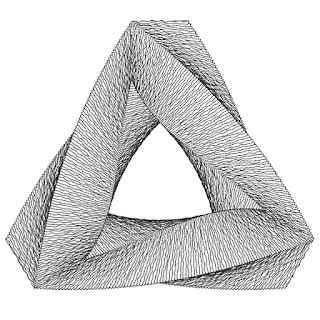 |
| When math, science, and art meet... |
For Op (optical) artists, the very fact that it's "hard to stop a GIF" was like someone having invented for them a perpetual motion machine. No longer did they have to rely on the optical phenomenon of retinal fatigue to make their images move. GIFs did it for them...and did it longer and better. The word, mesmerizing, comes to mind as the only term appropriate. Surrealists also noticed the new art medium and latched onto its conflicting realities in creating a whole new hybrid era of dreamlike digital creations (below).
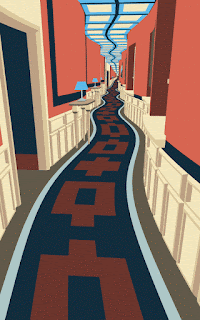 |
Think what Edvard Munch
could have done with GIFs |
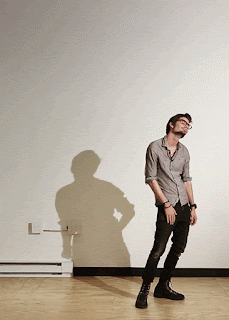 |
Peter Pan with a hyperactive
shadow? |
To my way of thinking, the greatest beauty of GIF technology is the relative simplicity and ease of use inherent in GIF
creation software. Today I download a program called Blumenthal's Easy GIF Animator. I'm still using it in demonstration mode (free) but I plan to spend $29.95 for it, if for no other purpose than to create GIF animations for use here as the need arises to make some point regarding the artwork I feature. The word "Easy" in the name is, of course, relative. It's easy if you've had experience in editing photos, or in creating video productions. The little GIF video (below), which I made today (after two false starts) honors the memory of our dearly departed
Pounci. And although it's not very sophisticated, once I got the knack, it took less than half an hour.
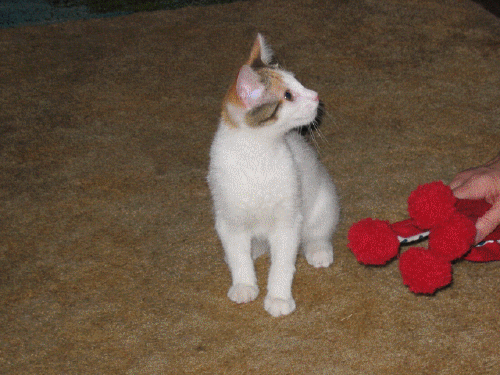 |
| Not quite a cat, not quite a kitten... |
Perhaps one of the most valuable contributions GIF software may make is when its placed in the hands of educators. Not only is it capable of teaching an entire lesson (such as in art, top) with a single, well-planned image, but it's also possible to "retrofit" the GIF format to famous paintings from the past making it possible for Picasso's
Two Women Running on the Beach (below), dating from 1922, to get some virtual exercise; or in the case of van Gogh's
Starry Night, to come alive with simulated visual movement. Speaking of van Gogh, The GIF image also makes it possible to do a quick and easy study of van Gogh's many portraits, their similarities and differences (bottom).
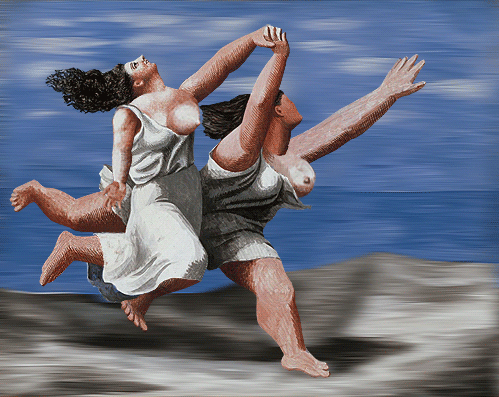 |
| Two Women Running on the Beach, 1922. Pablo Picasso |
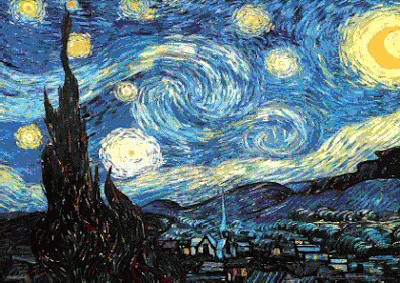 |
| Starry Night, 1889, Vincent van Gogh |
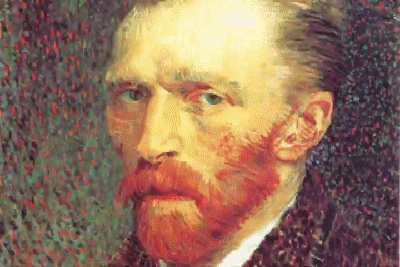 |
Would van Gogh love it or hate it.
I think he'd be "crazy" about it. |













No comments:
Post a Comment